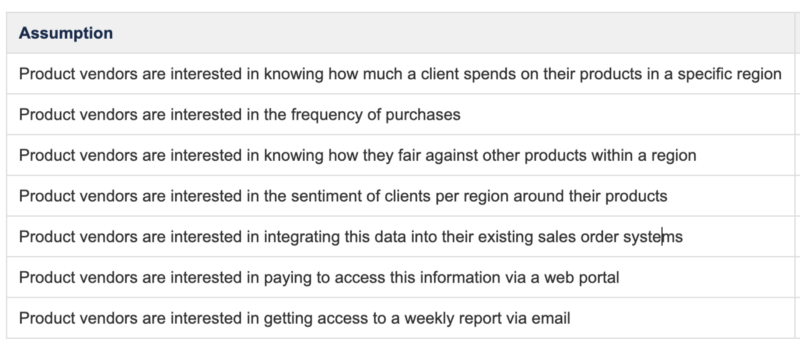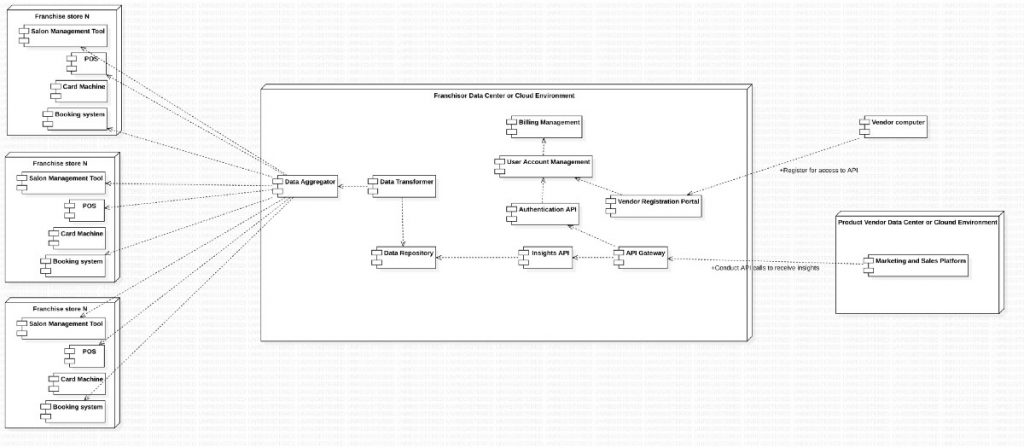With the increasing demand for technology to run businesses daily, it is inevitable that we will get to a point where more companies will be built by harnessing data generated to build new business models. Currently, we have multitudes of companies within the finance sector whose primary purpose is to provide data and information to stock brokers buying the hottest stocks on the market. Companies like Thomson Reuters, Bloomberg, and the likes have built empires on top of public datasets that other companies are directly dependent on.
It is interesting to note that it is possible to build a company with a core strategy around acquiring data, processing it, and making it accessible to others in a way that makes sense for them to consume. Behind the scenes, many large companies like Uber and Airbnb are being provided information from other smaller vendors required to drive out their global strategies. This without us knowing they exist. At Skywalk Innovations we have been involved in building numerous data repositories and data strategies for organizations to monetize and explore new business avenues. We dream of the possibility of providing valuable information or data not just to global behemoths, but to the local retailers that provide us with the much-needed goods and services we use on a daily. I will explore a data strategy for a specific business case and how it can be used to build a new business model for a company that is looking to reinvent itself. Below we will explore a business case for a small services business to utilize data as part of its strategy and business model.
Business Case
Company Name
Health and Wellness Beauty Franchise (Hypothetical company name)
Company Description
Health and Wellness Beauty Franchise is a multi-franchise business, their model is selling franchises to potential business owners looking to venture into a new lower-risk business. Since Health and Wellness Beauty Franchise is well established and its presence is national, we will assume signing up new franchisees is not an issue. However, looking at the future of the company they are looking to explore new revenue avenues without continuously pushing franchising costs.
The primary activity of the business is to offer a world-renowned experience to clients at strategically selected locations. The business relies on third-party vendors to supply them with products and a strong management team to grow and ensure each franchisee delivers the expected quality.
Where to Begin
The starting point is to pay attention to the current technology and data being collected about clients.
In a typical beauty salon, they will make use of a few systems
- Point of Sale: To capture payments from customers
- Booking system: To allow customers to book on-demand, from anywhere seamlessly
- Card machines: To capture card payments from customers
- Salon management software: To manage day-to-day activities, staff schedules, stock, and many more items.
Some businesses would use one solution to do all of the above and some would use more than one, the point is that there are technologies available to capture information at various granularity levels and securely store it for record-keeping and audit purposes.
Looking at those multiple solutions can be quite a daunting task to wonder where to begin, however, there is no clear-cut formula on what information is relevant. It will require a bit of creativity and exploratory thinking from your strategy team to think about what the ultimate goal/strategy will be.
I am going to select a very simple assumption based on what we already know about our company.
Business Assumptions
The current data collected about customers on our internal systems can be bundled with some additional data not captured directly by us to sell product insights to our vendors.
Since we know we don’t manufacture our own products and third-party vendors don’t have direct access to our customers, we could potentially produce insightful information regarding client spending and type of spend per region to help product vendors with in-store placements.
My starting point would always be to create a list of smaller assumptions and then create a mechanism to test this assumption. In this situation, a simple survey can do (we can use a digital tool to make information gathering easier like survey monkey or google forms), which we can send to our product vendors to validate the interest and what type of interest they desire. A simple example survey would be:

I left out the part about how these questions are answered but in this situation, we will take it that yes/no answers will be used to test whether our assumptions are valid or not. Please note this is not an extensive list, merely an example.
We are going to move on an assumption that the majority of our assumptions were validated by our product vendors and there seems to be a lot of interest in this information. The one thing our product vendors would like though is to have this information consumed via some API service so that it can be integrated into their internal marketing and sales platforms.
Architecting Your Solution
In the section above, we mentioned that our clients are quite interested in the potential insights we can provide, the caveat though is that they would like to integrate it into their internal marketing and sales platforms. This means that we will need to build some sort of API (Application Programming Interface). https://en.wikipedia.org/wiki/Application_programming_interface
At this point we know what is needed to be built, our next step is exploring our current technology and how we can gain access to the relevant data. I am going to assume that majority of our data can be accessed via our internal technologies. With a few slight modifications or maybe smaller tools introduced into the franchised store, we can capture the feedback of clients from every session. Let’s assume our salon management or POS tool allow us to extend it and add the required functionality. Now we have the relevant data captured, now we need to ensure we can make this accessible to our product vendor. I am skipping a few things like;
- Ensuring the data from each system is accessible to us
- Ensuring that each franchise has the same systems in place
- Ensuring that each salon has a stable internet connection
A note I missed out on, regarding payments for access to our data our client has agreed that they would pay a subscription fee to get access to the information. Below is a diagram representing what we will need, to make this solution come to life.

The main idea behind the diagram is that we need a couple of things:
- We need a way to access our client data from the various franchises
- We need a way to aggregate and transform that data into meaningful information
- We need a secure and scalable way to store that information
- We need a way for our vendors to be able to register and get access to the API that will serve them the data
- Lastly, we will need an API that provides documentation and the relevant access to the vendor
There is a multitude of technologies that can be used to build this out, we will be looking at using tried and tested technologies that are built for scale. Our infrastructure will also play a leading role in what differentiates our business. In situations like this, I would lean towards Amazon’s AWS infrastructure due to the variety of managed services offerings that are built for scale.
We are also not restricted to the data stores we end up using, so we could end up using an array of database technologies with an ElasticSearch index on top of it to speed up querying times.
With regards to payments and account management, there are many vendors that allow us to do recurring billing which means we can automate our billing process to the point of automatically processing and collecting funds. So our solution does not require a massive administrative team.
Final Thoughts
It’s quite an exciting time we live in to know that many companies stand the opportunity to benefit from monetising large volumes of data they have been collecting for so long. With some creativity and a strong technical partner or team it is a worthy venture to explore a new digital even global business model.
Try out Skywalk
Would you like to explore a data-driven business model? Give Skywalk a chance. Book a no-obligation session with our team and explore more ideas around technology to grow your business.





